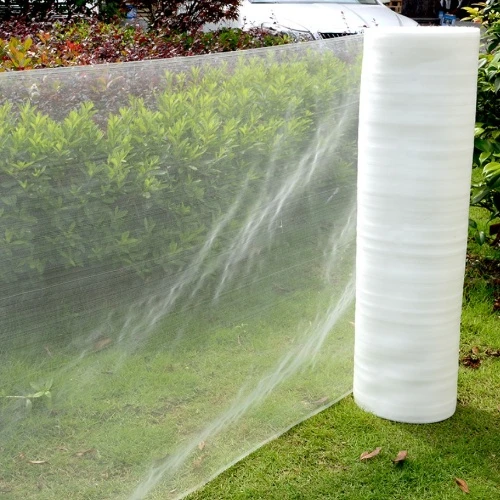-
 Afrikaans
Afrikaans -
 Albanian
Albanian -
 Amharic
Amharic -
 Arabic
Arabic -
 Armenian
Armenian -
 Azerbaijani
Azerbaijani -
 Basque
Basque -
 Belarusian
Belarusian -
 Bengali
Bengali -
 Bosnian
Bosnian -
 Bulgarian
Bulgarian -
 Catalan
Catalan -
 Cebuano
Cebuano -
 China
China -
 Corsican
Corsican -
 Croatian
Croatian -
 Czech
Czech -
 Danish
Danish -
 Dutch
Dutch -
 English
English -
 Esperanto
Esperanto -
 Estonian
Estonian -
 Finnish
Finnish -
 French
French -
 Frisian
Frisian -
 Galician
Galician -
 Georgian
Georgian -
 German
German -
 Greek
Greek -
 Gujarati
Gujarati -
 Haitian Creole
Haitian Creole -
 hausa
hausa -
 hawaiian
hawaiian -
 Hebrew
Hebrew -
 Hindi
Hindi -
 Miao
Miao -
 Hungarian
Hungarian -
 Icelandic
Icelandic -
 igbo
igbo -
 Indonesian
Indonesian -
 irish
irish -
 Italian
Italian -
 Japanese
Japanese -
 Javanese
Javanese -
 Kannada
Kannada -
 kazakh
kazakh -
 Khmer
Khmer -
 Rwandese
Rwandese -
 Korean
Korean -
 Kurdish
Kurdish -
 Kyrgyz
Kyrgyz -
 Lao
Lao -
 Latin
Latin -
 Latvian
Latvian -
 Lithuanian
Lithuanian -
 Luxembourgish
Luxembourgish -
 Macedonian
Macedonian -
 Malgashi
Malgashi -
 Malay
Malay -
 Malayalam
Malayalam -
 Maltese
Maltese -
 Maori
Maori -
 Marathi
Marathi -
 Mongolian
Mongolian -
 Myanmar
Myanmar -
 Nepali
Nepali -
 Norwegian
Norwegian -
 Norwegian
Norwegian -
 Occitan
Occitan -
 Pashto
Pashto -
 Persian
Persian -
 Polish
Polish -
 Portuguese
Portuguese -
 Punjabi
Punjabi -
 Romanian
Romanian -
 Russian
Russian -
 Samoan
Samoan -
 Scottish Gaelic
Scottish Gaelic -
 Serbian
Serbian -
 Sesotho
Sesotho -
 Shona
Shona -
 Sindhi
Sindhi -
 Sinhala
Sinhala -
 Slovak
Slovak -
 Slovenian
Slovenian -
 Somali
Somali -
 Spanish
Spanish -
 Sundanese
Sundanese -
 Swahili
Swahili -
 Swedish
Swedish -
 Tagalog
Tagalog -
 Tajik
Tajik -
 Tamil
Tamil -
 Tatar
Tatar -
 Telugu
Telugu -
 Thai
Thai -
 Turkish
Turkish -
 Turkmen
Turkmen -
 Ukrainian
Ukrainian -
 Urdu
Urdu -
 Uighur
Uighur -
 Uzbek
Uzbek -
 Vietnamese
Vietnamese -
 Welsh
Welsh -
 Bantu
Bantu -
 Yiddish
Yiddish -
 Yoruba
Yoruba -
 Zulu
Zulu
Efficient Solutions for Sustainable Farming Using Shade Net Technology
The Importance of Shade Nets in Sustainable Farming
In recent years, the agricultural sector has been making significant strides to adopt sustainable practices that enhance productivity while minimizing environmental impact. Among these innovative practices, the use of farm shade nets has emerged as a revolutionary solution for farmers around the world. Shade nets not only protect crops from the harsh effects of sunlight but also contribute towards a more sustainable agricultural model that conserves resources and enhances crop quality.
Understanding Shade Nets
Farm shade nets are typically made from synthetic materials, designed to provide varying levels of shade depending on the crop's specific needs. These nets come in different densities and colors, which influence the amount of sunlight that reaches the plants below. Ranging from 30% to 90% shading, they are adaptable, allowing farmers to select the appropriate level of coverage for different crops or growth stages.
Benefits of Using Shade Nets
1. Temperature Regulation One of the most significant benefits of shade nets is their ability to moderate temperatures. During hot summer months, high temperatures can lead to heat stress in plants, which adversely affects growth and yields. Shade nets help maintain a more stable temperature, creating an optimal microclimate for crops.
2. Water Conservation In regions prone to drought or where water resources are limited, shade nets can play a crucial role in conserving moisture in the soil. By reducing evaporation rates, these nets help in maintaining soil humidity, thereby requiring less frequent irrigation. This not only saves water but also promotes healthier root systems.
3. Pest and Disease Management Shade nets can act as a physical barrier against various pests, reducing the need for chemical pesticides. This protective layer helps mitigate the spread of diseases that can devastate crops, leading to a healthier yield. This shift towards integrated pest management contributes to a more eco-friendly approach to farming.
farm shade net

4. Enhanced Crop Quality By filtering sunlight, shade nets can improve crop quality. For instance, certain fruits and vegetables thrive with a little less sunlight, producing more flavorful and marketable products. Shade nets can also protect crops from sunburn and other damage caused by extreme weather conditions.
5. Fostering Biodiversity The careful use of shade nets can encourage biodiversity in agricultural systems. By creating a micro-ecosystem, these nets provide favorable conditions for beneficial insects and pollinators, which play a vital role in the overall health of agricultural landscapes.
Challenges and Considerations
Despite the numerous advantages, the implementation of shade nets is not without challenges. The initial investment cost can be significant, especially for small-scale farmers. Furthermore, proper installation and maintenance are crucial for maximizing their benefits. Farmers need to be educated on the correct specifications and practices to ensure effective use.
Additionally, the choice of material for shade nets must be considered, as lower-quality nets may deteriorate quickly under the sun. Farmers should strive for durable materials that offer long-term benefits while being environmentally sustainable.
Conclusion
The adoption of shade nets is a significant advancement in modern farming that reflects a broader trend towards sustainability in agriculture. By providing crucial benefits such as temperature regulation, water conservation, pest management, enhanced crop quality, and biodiversity improvement, shade nets emerge as a versatile tool for farmers.
As the global agricultural landscape continues to face challenges posed by climate change, resource scarcity, and the need for higher productivity, farm shade nets provide a promising solution. With proper education and investment, they can empower farmers to achieve sustainable growth, secure their livelihoods, and contribute positively to the environment. Thus, as we move forward, the integration of such innovative techniques will be essential in shaping a robust and resilient agricultural future.
-
Shipping Plastic Bags for Every NeedNewsJul.24,2025
-
Safety Netting: Your Shield in ConstructionNewsJul.24,2025
-
Plastic Mesh Netting for Everyday UseNewsJul.24,2025
-
Nylon Netting for Every UseNewsJul.24,2025
-
Mesh Breeder Box for Fish TanksNewsJul.24,2025
-
Expanded Steel Mesh Offers Durable VersatilityNewsJul.24,2025











